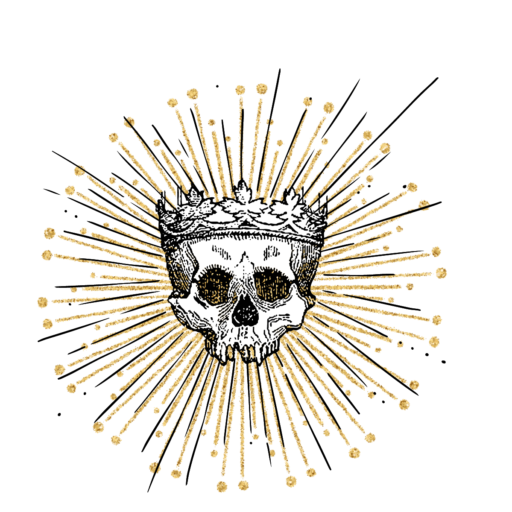Materia Medica: Venus Flytrapfeatured
Dionaea muscipula, commonly known as Venus Flytrap, is a carnivorous plant from the Droseraceae (Sundew) family. Native to the temperate and subtropical wetlands of North and South Carolina, this plant has become world-famous and widely cultivated for their extraordinary carnivorous actions and distinctive features.
Appearance:

D. muscipula is an herbaceous perennial that grows up to 17 inches high, with leaves about three to five inches long. Two hinged lobes are at the end of each leaf, similar to an open mouth. Inside, each lobe has hair-like growths that cause them to snap shut, trapping insects within their jaws.
The lobes are edged with small bristles that interlock when the trap shuts, ensuring prey can’t escape.
The trap will only snap shut if the hairs are stimulated multiple times, preventing the plant from wasting energy on false alarms. These hairs also possess a heat sensor. For example, a lit match or forest fire causes them to snap shut, making the plant more resilient in periods of summer fires. [1]
It is estimated that Venus flytrap plants can live up to 20 years in the wild, possibly longer. The plants produce white flowers from May through June with fruits maturing June through July. The Venus flytrap’s main source of energy is provided through photosynthesis. The digestion of insects gives the plant nutrients that are not readily available in the surrounding environment. [2]

Energetics: Cooling
Properties: Anodyne, anti-inflammatory, antimutagenic, antiviral, cytotoxic, immune stimulant
Dosage: Tincture of the fresh plant – 1-4ml (0.2-0.8tsp) 3x daily. [3]
Habitat:
D. muscipula occupies distinct longleaf pine habitats in two regions of the Carolinas: Coastal Plain and the Sandhills.
The plant is more common in the Coastal Plain, where they grow in wet loamy pine savannas and sand pine savannas. These sites are generally flat with wet or moist soil for most of the year.
Venus flytrap rarely occurs in seasonally flooded depressions, although they can thrive on the edges of such sites.
In the Sandhills region, the plant lives in narrow, moist areas between Streamhead Pocosins and longleaf pine/scrub oak/wiregrass uplands and similar areas between Sandhill seeps and longleaf pine uplands. [2]
Venus flytrap is common in the horticulture trade and has been planted and naturalized in Alabama, California, Delaware, Florida and New Jersey as well as in other countries like England and New Zealand. [2] There appears to be an introduced population in western Washington as well. [4]
Given their native habitat, Venus flytrap is a full sun plant with a preference for moisture.
This plant population is classified as “vulnerable” by the IUCN. This means the species is being threatened with extinction unless the circumstances that are threatening survival and reproduction improve. Population numbers and sizes continue to decline primarily due to drastic changes in Venus flytrap’s habitat as a result of fire suppression, various agricultural practices, and appropriation of land which may involve logging, bedding, ditching, and draining.
Many roadside occurrences of Venus flytraps are threatened by vehicular activities, road maintenance, and road expansions.
Another major threat to Venus flytraps is over-collection. Poaching is also a serious threat to Venus flytrap and incidents of theft appear to have increased in recent years. Poaching Venus flytrap plants is now a felony in multiple North Carolina counties. [2]
Research:
Venus Fly Trap contains powerful compounds that combat the causes and symptoms of cancer [5]. Among the anti-cancer compounds are Plumbagin, Ellagic Acid, Gallic Acid, and Myricetin, which possess potent therapeutic properties.
Plumbagin possesses numerous medicinal properties such as antibacterial, antifungal, anti-inflammatory, and anti-cancer effects. It inhibits topoisomerase II, disrupts microtubules, and blocks the NF-κB signaling pathway. Plumbagin induces apoptosis, cell cycle arrest, and inhibits Akt pathway and GSK-3β activity in cancer cells. In vivo studies demonstrate its effectiveness in inhibiting tumor growth and metastasis. [5]
Ellagic Acid, found in various plants like pomegranate and berries, acts as a defense mechanism against herbivores and pests and exhibits antibacterial properties. It’s also a chemopreventive agent, reducing cell growth and proliferation. In pancreatic and prostate cancer cells, it induces apoptosis. In rats with colon cancer, it reduced the expression of inflammatory markers. Additionally, in breast cancer cells, ellagic acid inhibits proliferation and migration.
Gallic Acid has nematicidal (kills parasitic worms), antibacterial, and antifungal properties. It has been widely studied for its potential in cancer treatment. In leukemia cells, it stops growth and induces cell death through apoptosis. It reduces inflammation and blocks pathways crucial for cancer cell proliferation. In mice, it slowed cancer growth. In osteosarcoma cells, it slows growth and induces apoptosis by affecting important cell pathways.
Myricetin is found in various plants and acts as a defense molecule. It repels nematodes and induces root nodules. It possesses antibacterial and anticancer properties, inhibiting mutagenesis and inducing apoptosis in pancreatic and bladder cancer cells. In mice, it inhibits tumor growth and metastasis. It also inhibits DNA polymerases and topoisomerase II, affecting cell proliferation and triggering apoptosis in colon carcinoma cells. In pancreatic cancer cells, it decreases PI3 kinase activity and induces apoptosis. In rats, it inhibits cytochrome P450 activity, increasing the effectiveness of cancer drugs like tamoxifen and doxorubicin. [5]
As stated in “The Modern Herbal Dispensatory”, the medicine of Venus flytrap is utilized in cases of malignant conditions such as tumors in advanced stages (mammary, bladder, prostate carcinomas, and osteosarcoma) and solid tumors. The plant is also used for Hodgkin’s and Non-Hodgkin’s lymphoma. [3]
Sources:
[1] Venus flytraps shut their traps when flames approach (nature.com)
[2] U.S. Fish and Wildlife Service
[3] Thomas Easley, Steven Horne. (2016). The Modern Herbal Dispensatory.
[4] Donald E. Schnell. (2002). Carnivorous Plants of The United States and Canada.
[5] Venus flytrap contains powerful compounds that cure and prevent cancer
Previous
Next


